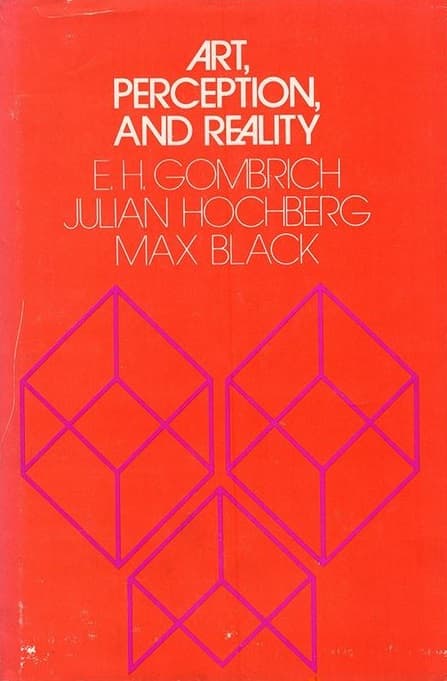
Book Review Summary: Art, Perception, and Reality (Thalheimer Lectures)
Introduction
"Art, Perception, and Reality" by E.H. Gombrich, Julian Hochberg, and Max Black offers a multidisciplinary exploration of perception and art. The book consists of three individual essays that delve into various aspects of perception, including its relationship with art, the psychology of perception, and the philosophical implications of visual representation. This book provides a stimulating and thought-provoking read for both experts and lay readers alike.
About E.H. Gombrich
E.H. Gombrich, also known as Sir Ernst Hans Josef Gombrich, was an Austrian-born art historian who spent most of his career in the United Kingdom. Renowned for his contributions to the field of art history, Gombrich's work focuses on the history of art and its relationship with culture, society, and psychology. His essay in "Art, Perception, and Reality" adds to his extensive body of work, offering insights into the complexities of perception and its role in understanding art.
Analysis of Views
- Interdisciplinary Approach: Readers appreciate the book's multidisciplinary approach, as it combines perspectives from art history, psychology, and philosophy. This interdisciplinary approach allows for a comprehensive understanding of perception and its significance in art.
- Engaging Essays: The individual essays in the book are praised for their accessibility and engaging style. Readers find the essays thought-provoking and enjoyable to read, with many commenting on the depth and importance of the subject matter.
- Psychology of Perception: The essay on the psychology of perception receives particular attention from readers. It delves into the physiological aspects of perception and raises questions about how our perceptions shape our understanding of art. Some readers find this essay particularly insightful, as it encourages self-reflection on one's own perceptions as a viewer of art.
- Debate on Representation: Another essay explores the relationship between representation and visual perception. It raises questions about the extent to which conventions or interpretation influence our understanding of art. Readers appreciate the thorough examination of this topic and find it stimulating for intellectual discussion.
- Open-Ended Questions: The book does not provide definitive answers to some fundamental questions about art and perception. Instead, it presents various perspectives and encourages readers to engage with these questions themselves. This open-ended approach allows for personal reflection and fosters intellectual curiosity.
Reasons for Recommendation
- Multidisciplinary Perspective: The book's interdisciplinary approach makes it appealing to readers interested in exploring perception from different disciplinary perspectives. It provides a comprehensive understanding of the subject matter, making it valuable for both experts and lay readers alike.
- Engaging Writing Style: The essays are praised for their accessibility and engaging style, making them enjoyable to read even for those who may not have prior knowledge in the field. The authors' ability to present complex ideas in an approachable manner is highly appreciated by readers.
- Insightful Reflections: The book encourages readers to reflect on their own perceptions as viewers of art. It raises thought-provoking questions that prompt self-reflection and deepen one's appreciation for the complexities of visual representation. This introspective aspect makes it a valuable addition to any art enthusiast's reading list.
Conclusion
"Art, Perception, and Reality" by E.H. Gombrich, Julian Hochberg, and Max Black offers a multidisciplinary exploration of perception and its relationship with art. The book's interdisciplinary approach, engaging writing style, and thought-provoking essays make it a valuable addition to any reader's library. Whether you are an art historian, psychologist, philosopher, or simply an art enthusiast, this book provides a stimulating read that encourages introspection and fosters intellectual curiosity. With its open-ended questions and thought-provoking insights, "Art, Perception, and Reality" is a must-read for anyone interested in delving into the complexities of perception and its role in shaping our understanding of art.